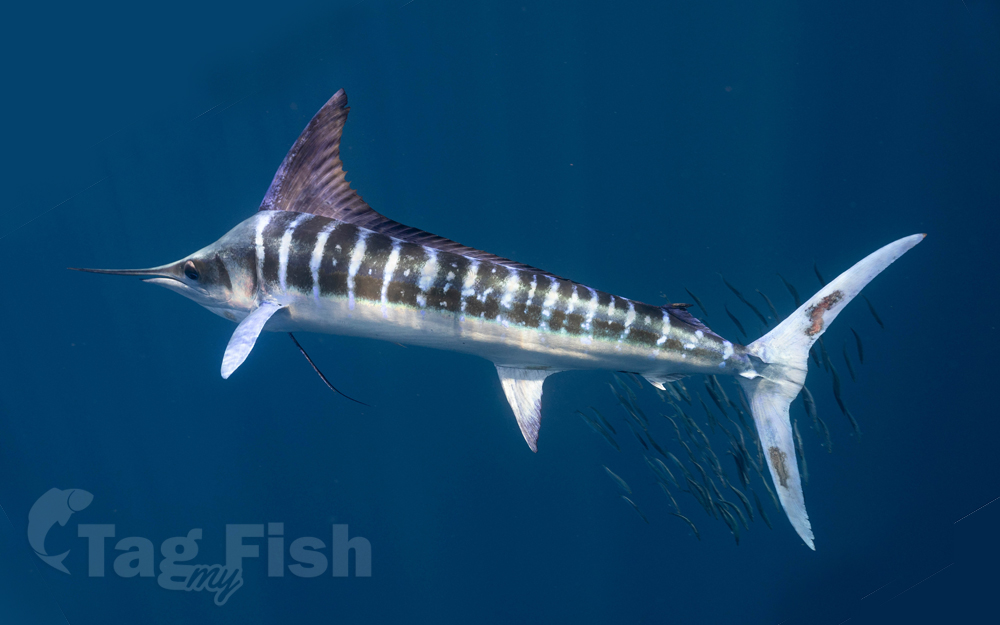Striped marlin
(Kajikia audax)

Classification
General data
The striped marlin (Kajikia audax) is a species of marlin found in tropical to temperate Indo-Pacific oceans not far from the surface. It is a desirable commercial and game fish with a record weight (in 1982) of over 200 kg (440 lb) and a maximum length of 4.2 m (13.8 ft). The striped marlin is a predator that hunts during the day in the top 100 m or so of the water column, often near the surface. One of their chief prey is sardines.
Distribution
Indo-Pacific: tropical, subtropical and temperate waters. Highly migratory species. The distribution in the Pacific Ocean is unique among billfishes and tunas in that it forms a horseshoe-shaped pattern from the northwest Pacific through the eastern Pacific to the southwest Pacific. In the Indian Ocean, fish are more densely distributed in equatorial regions with higher concentrations off eastern Africa, in the western Arabian Sea, the Bay of Bengal and off northwestern Australia.
Morphology
Dorsal spines (total): 0; Dorsal soft rays (total): 42-48; Anal spines: 0; Anal soft rays: 18 - 24. Body elongated and compressed; upper jaw produced into a robust and medium sized beak; two dorsal fins, the height of the first greater than the greatest depth, short anteriorly, taller in the middle, then becoming shorter posteriorly; pectoral fins falcate and flexible, with 18 to 22 rays; body densely covered by small, embedded scales with 1 or 2 bluntish points; back dark blue; belly silvery; membrane of first dorsal fin blue black without dark spots; flanks with about 20 bluish stripes. Blue-black above and silvery white below, with about 15 rows of cobalt-colored stripes; 1st dorsal fin dark blue; other fins dark brown, sometimes with a tinge of dark blue; anal fin bases with a tinge of silvery white.
Biology
Epipelagic and oceanic species, usually found above the thermocline. Generally inhabit cooler water than either black (Makaira indica) or blue marlin (M. mazara). Most dominant and widely distributed of all billfishes. Their abundance increases with distance from the continental shelf. Usually seen close to shore only where deep drop-offs occur. Mostly solitary, but form small schools by size during the spawning season. They are usually dispersed at considerably wide distances. Feed on fishes, crustaceans, and squids.











